|
Having arrived safely
at the Kyoto station, let me take a moment to speak about Japanese
train stations. During the 10 days we were in Japan, we ended up
taking dozens of trains of all sizes and flavors. All the way from
the small local trams to the finest, high speed express
shinkansen. It is an amazingly effective means of travel. And
every single one runs exactly on schedule. If the schedule says a
train leaves at 3:17 PM, it leaves at 3:17 PM, not a minute
earlier or later. |
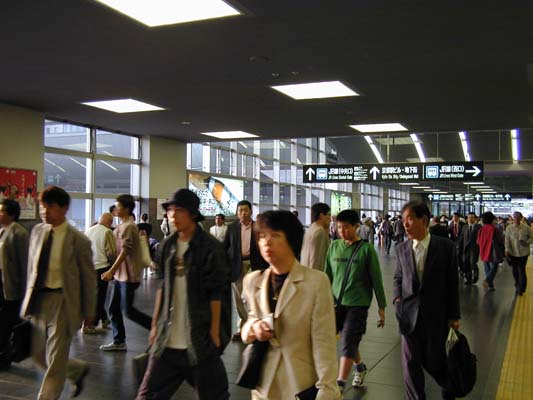 |
|
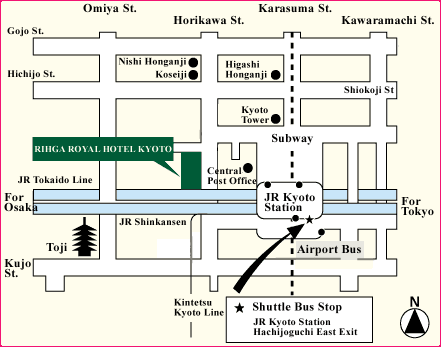 |
We will spend the
next three days in Kyoto, much of it in this general vicinity. The
Central Post Office had international ATM machines, so I was able
to withdraw several 10,000 yen bills directly from my American
checking account at the current exchange rate. |
|
|
We stayed in the
Rihga Royal Hotel.
I had to pay for an extra day since we arrived early. I can tell you that
it was much more then the rate I received arranging the travel through
JTB. I don't have a photo of our room, but it was just a
standard Western style room.
The service was phenomenal.
From the greeter at the main door to the concierge, every service was
eagerly and gladly presented. |
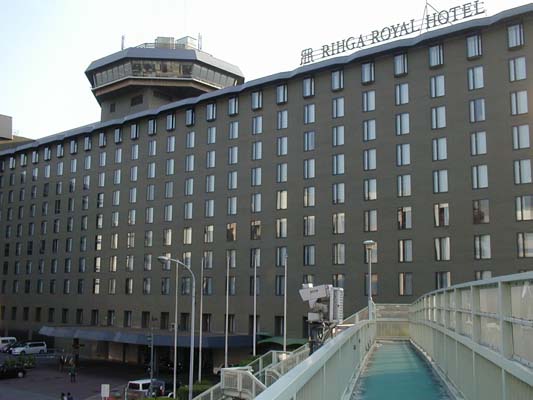 |
|
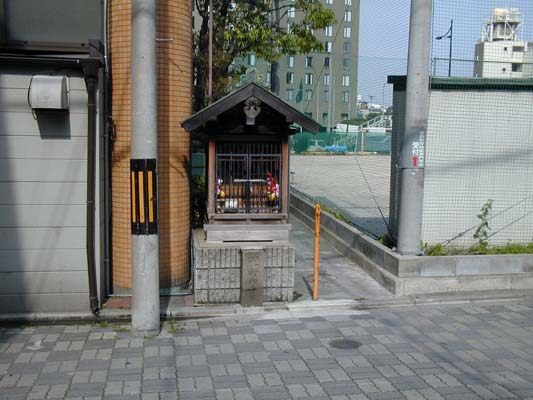 |
As we wandered the
streets of Kyoto, we came across this small shrine just a short
distance from the hotel (in fact, you can see the Rihga just
behind the shrine). On the mouse over picture, you can see a
temple we discovered on our walk around the back of the hotel to
find a pharmacy.
While Tokyo is the capital
and houses the Imperial Palace and the emperor himself, Kyoto is
considered the cultural center of Japan. Before Tokyo, Kyoto had served as
the capital of Japan for over a thousand years. Because of that long
history, there are countless shrines and temples to be found here. |
|
|
OK, while we had
planned to totally immerse ourselves in the Japanese culture for
the duration of the trip, we had finally grown a little weary of
the raw fish diet. We felt that we deserved a little break today
<grin> |
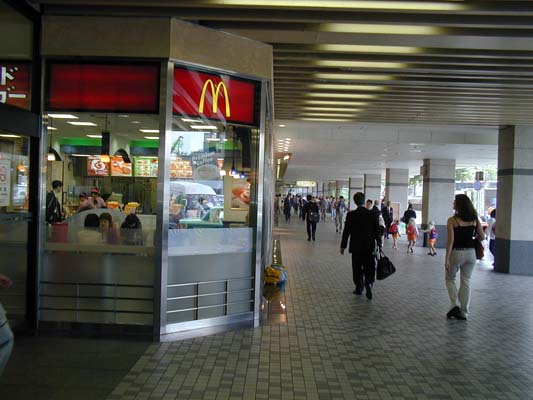 |
|
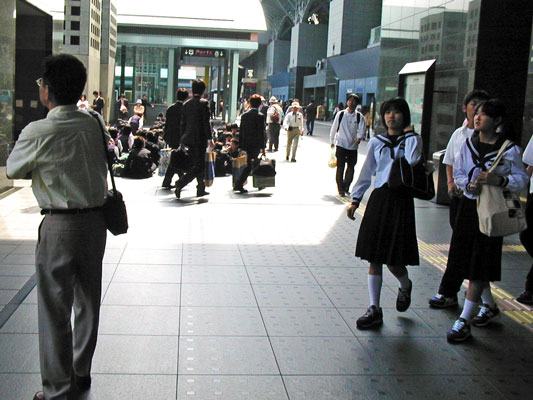 |
We had occasion to
walk through the Kyoto train station many times during our stay
there. We discovered that Kyoto must host thousands upon thousands
of school field trips. Entire classes of students were endless
arriving to and leaving from the station. The shrines and temples
we visited over the next few days were teeming with students
taking the same tours. In the background is a class of students
sitting on the ground waiting for the next step in their trip and
to the right are school girls in the traditional Japanese seifuku,
a school uniform based on a sailor's outfit. |
|
|
We were quite
fortunate to find a free Internet cafe just a block or two from
the hotel. Finally, we were able to check our email. That's
Jennifer sitting it the foreground as we wait for our turn at a
computer. Next to her is a flattened cardboard box and some
shipping tubes to the other side of her we purchased from the post
office. We were planning to ship some of the stuff we didn't need
like these thick coats we brought for Mount Fuji and those darn
flag staffs home. Unfortunately the shipping costs ended up like
30,000 yen for air mail or 8,000 yen for 4 - 6 weeks ground, so we
decided to hang on to the stuff and just carry it with us. |
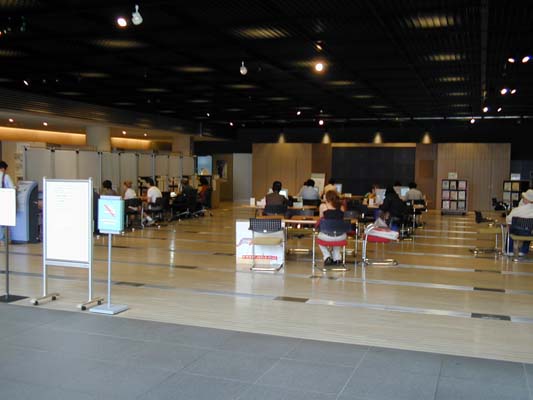 |
|
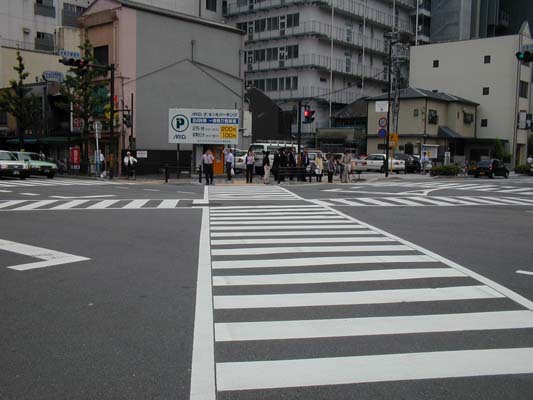 |
Due to the high level
of pedestrian traffic, part of the traffic light pattern is to
stop cars in all four directions and allow pedestrians to cross
diagonally as well as directly across. |
|
|
Some of the most
charming things were also the smallest. Just a random pair of
parakeets sitting in a cage and a few flowers set outside a store.
Even in downtown Kyoto, you can find little touches of nature. |
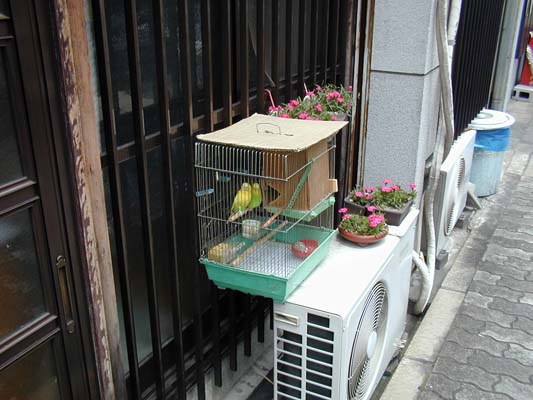 |
|
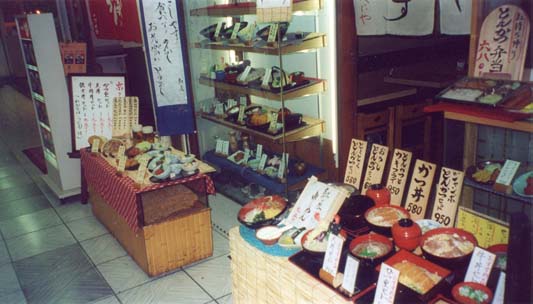 |
Finding something to
eat was a cinch. Many restaurants display their food with plastic
models. All you need do is point out the dish you want and the
waiter will take care of it from there. |
|
|
For the first time
since we arrived in Japan, Jennifer and I split up for an hour or
so. She shopped for clothes while I checked out the bookstore. It
was an interesting study of human nature. In Japan, it is quite
common to read magazines right off the rack as these folks are
doing. And the demographics was sharply delineated. Teenage girls
in front of the shoujo (girls comics), teenage boys in front of
the shonen (boys comics), young adults in front of the
fashion/contemporary mags, businessmen in front of the sports
mags, geeks in front of the gaming mags. Adult magazines were
predominately displayed, but everyone seemed to avoid that section
^_^ |
 |
|